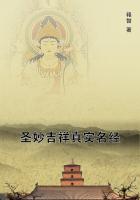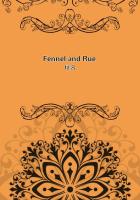She went to her room, removed the beautiful dress and, arranging it on a hanger, left it in her closet. Slipping into an old dressing gown, she ran to her workroom and wrote a letter to Marian from herself. She tried not to tell Marian the big, vital thing that was throbbing in her heart all day concerning her work, the great secret that meant such a wonderful thing to her, the thing that was beating in her heart and fluttering behind her lips like a bird trying to escape its cage; but she could tell her in detail of Eileen's undoubted removal to San Francisco; she could tell her enough of the financial transactions of the day to make herunderstand what had been happening in the past; and she could tell of her latest interview with John Gilman. Once, as she sat with her pen poised, thinking how to phrase a sentence, Linda said to herself: "I wonder in my heart if he won't try to come crawfishing back to Marian now, and if he does, I wonder, oh, how I wonder, what she will do." Linda shut her lips very tight and stared up through her skylight to the stars, as she was fast falling into a habit of doing when she wanted inspiration.
"Well, I know one thing," she said to the shining things above her, "Marian will do as she sees fit, of course, but if it were I, and any man had discarded me as John Gilman discarded Marian, in case he ever wanted to pick me up again he would find I was not there. Much as I plan in my heart for the home and the man and the little people that I hope to have some day, I would give up all of them before I would be discarded and re-sought like that; and knowing Marian as I do, I have a conviction that she will feel the same way. From the things she is writing about this Snow man I think it is highly probable that he may awake some day to learn that he is not so deeply grieved but that he would like to have Marian to comfort him in his loneliness; and as for his little girl I don't see where he could find a woman who would rear her more judiciously and beautifully than Marian would."She finished her letter, sealed and stamped it, and then, taking out a fresh sheet, she lettered in at the top of it, "INDIANPOTATOES" and continued:
And very good potatoes they are. You will find these growing everywhere throughout California, blooming from May to July, their six long, slender, white petals shading to gold at the base, grayish on the outside, a pollen-laden pistil upstanding, eight or ten gold-clubbed stamens surrounding it, the slender brown stem bearing a dozen or more of these delicate blooms, springing high from a base of leaves sometimes nearly two feet long and an inch broad, wave margined, spreading in a circle around it. In the soil of the plains and the dry hillsides you will find an amazingly large solid bulb, thickly enwrapped in a coat of brown fiber, the long threads of which can be braided, their amazing strength ****** them suitable for bow strings, lariats, or rope of any kind that must needs be improvised for use at the moment. The bulbs themselves have many uses. Crushed and rubbed up in water they make a delightful cleansing lather.
The extracted juice, when cooked down, may be used as glue. Of the roasted bulbs effective poultices for bruises and boils may be made. It was an Indian custom to dam a small stream and throw in mashed Amole bulbs, the effect of which was to stupefy the fish so that they could be picked out by hand; all of which does not make it appear that the same bulb would serve as an excellent substitute for a baked potato; but we must remember how our grandmothers made starch from our potatoes, used them to break in the new ironware, and to purify the lard; which goes to prove that one vegetable may be valuable for many purposes. Amole, whose ponderous scientific name is Chlorogalum pomeridiarum, is at its best for my purposes when all the chlorophyll from flower and stem has been driven back to the bulb, and it lies ripe and fully matured from late August until December.
Remove the fibrous cover down to the second or third layer enclosing the bulb. These jackets are necessary as they keep the bulbs from drying out and having a hard crust. Roast them exactly as you would potatoes. When they can easily be pierced with a silver fork remove from the oven, and serve immediately with any course with which you would use baked potatoes.
"And gee, but they're good!" commented Linda as she reread what she had written.
After that she turned her attention to drawing a hillside whitened here and there with amole bloom showing in its purity against the warm grayish-tan background. The waving green leaves ran among big rocks and overlapped surrounding growth. At the right of her drawing Linda sketched in a fine specimen of monkey flower, deepening the yellow from the hearts of the amole lilies for the almost human little monkey faces. On the left one giant specimen of amole, reared from a base of exquisitely waving leaves, ran up the side of the drawing and broke into an airy and graceful head of gold-hearted white lilies. For a long time Linda sat with poised pencil, studying her foreground. What should she introduce that would be most typical of the location and gave her the desired splash of contrasting color that she used as a distinctive touch in the foreground of all her drawings?
Her pencil flew busily a few minutes while she sketched in a flatly growing bush of prickly phlox, setting the flower faces as closely as the overlapped scales of a fish, setting them even as they grow in nature; and when she resorted to the color box she painted these faces a wonderful pink that was not wild rose, not cerise, not lilac, but it made one think of all of them. When she could make no further improvement on this sketch, she carefully stretched it against the wall and tacked it up to dry.















